Imagine yourself enveloped in the serenity of the wide-open wilderness. The day’s hike or paddling is behind you, and now is the time for the day’s catch or your carefully chosen provisions to take center stage. In this world away from the hustle and bustle of everyday life, meals transform into much more than mere fuel; they are the heart of your adventure.
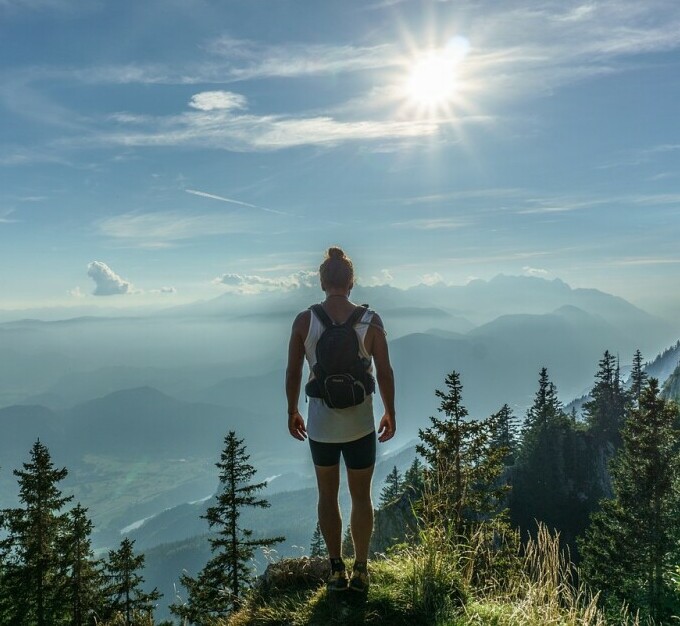
The nourishment I find here in the outdoors doesn’t merely come from the nutritious content of the food. As a backpacker, I experience a profound connection between my meals and the wilderness. Sharing a meal with fellow hiker or paddler under the open sky, after a day of navigating pristine waters and untouched landscapes, isn’t just eating; it’s an affirmation of the efforts and the wonders we’ve encountered.
The meals we share here become pivotal experiences themselves, offering comfort, taste and a time to recharge not only our bodies, but our spirits as well. Morale soars when a flavorful dish complements the stunning scenery, highlighting why eating well here is an art that enriches the soul. This is the allure of dining in the great outdoors—the boundary waters serve as chef and backdrop, both, to the cuisine of the wild.
Sharing food fosters camaraderie and unity, vital ingredients for any successful group expedition. The stories told and laughs shared over a pot of simmering stew or while distributing handfuls of trail mix, weave into the collective memory of the adventure. These moments remind us that, although individual preferences may vary, the joy of a satisfying meal is universal. This shared experience amplifies the joy of the Boundary Waters refuge.
No less important than the shared experience is the practicality of caloric sustenance that these meals provide. Every seed and morsel has been selected with care to sustain the intense energy demands of paddling, hiking, and setting up camp. The bounty of a Boundary Waters meal does more than satiate hunger—it rebuilds the tired muscles and replenishes the spent energy stores, preparing adventurers for another day of exploration.
Strategic Meal Planning for Wilderness Adventures
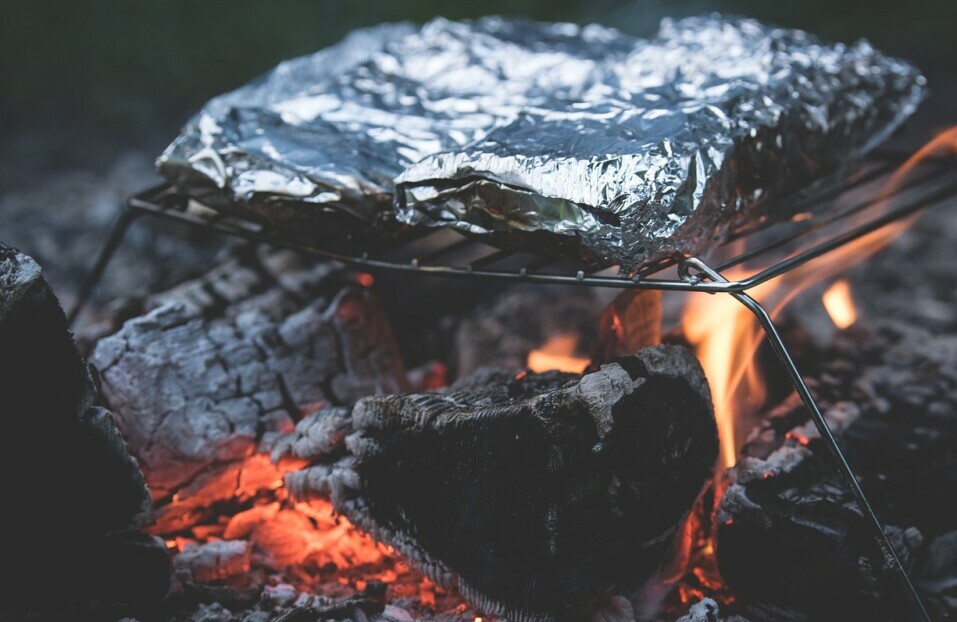
When you’re preparing for a backpacking trip into the great outdoors, your meal planning needs to be as tight as your knots and as balanced as your canoe. It’s the backbone of your journey, providing not only sustenance but also comfort after a strenuous day of paddling and portaging. A well-thought-out meal plan is critical to maintaining your energy, morale, and health during the adventure.
Start by calculating the calories you’ll need. Backpacking is an energy-intensive activity, and consuming enough calories is crucial for keeping you fueled. Consider factors like the length of your trip, the anticipated level of activity, and the general calorie requirements for each person. An adult might need anywhere from 2,500 to 4,500 calories per day, depending on these factors. Distribute these calories across breakfast, lunch, dinner, and snacks to ensure steady energy throughout the day.
Special dietary needs should not be overlooked. Whether it’s allergies, intolerances, or personal preferences, making sure every traveler’s dietary needs are met is part of successful meal planning. Sometimes, it means packing separate meals or finding common ground with versatile ingredients that everyone can enjoy.
One way to inject some fun into the planning process is to involve your fellow adventurers. Brainstorm meal ideas together and have everyone contribute a favorite recipe. This ensures variety and that everyone has something to look forward to. Moreover, it makes the meal planning process interactive and gives a sense of ownership to all participants, enhancing the camaraderie of the group.
Now, with your meal plan fleshed out, you’re ready to tackle the next challenge: packing your food efficiently and effectively for your trek. This sets the stage for a seamless transition to the following section on food packing strategies.
Pack Light, Eat Right: Food Packing Strategies for Backpackers
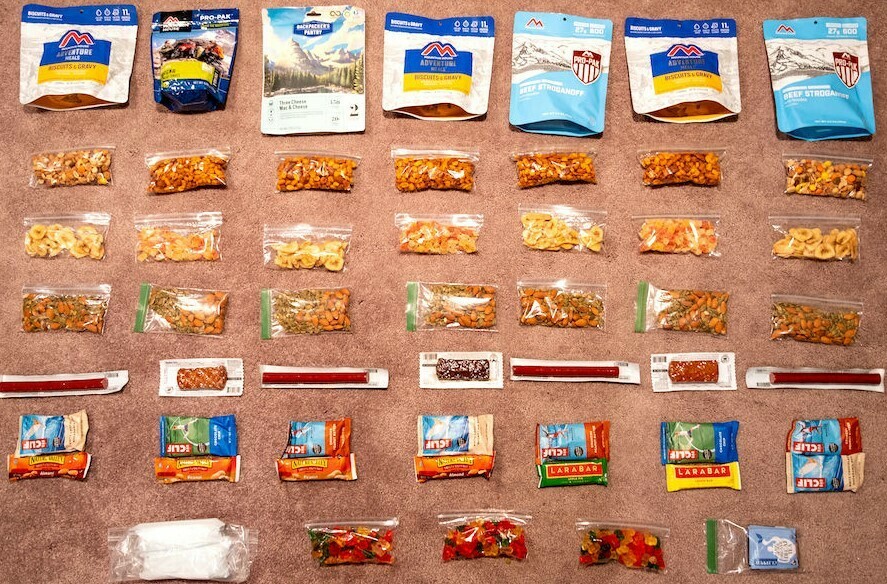
When you’re immersed in the outback, where every canoe stroke takes you deeper into the wild, the way you pack your food becomes more than a logistical concern; it’s a vital element of your journey. It’s about balancing pack weight against the need for nourishing and enjoyable meals.
Packing efficiently begins with the distinction between pantry style and individual meal packing. If you’re traveling in a group, pantry-style allows for shared resources and varied meals, but at the cost of organization complexity. On the other hand, individual meal packing – where each meal is bagged separately – streamlines access and can save time but may lead to repetition in meals and over-packing.
Here’s a tip that could change the game for you: dehydrated foods. They’re incredibly lightweight and compact, reducing both pack weight and waste. Plus, they have a long shelf life which means less worry about spoilage.
During the packing process, prevent spoilage by choosing the right foods. Hard cheeses, summer sausage, and whole-grain wraps are sturdy and less prone to crushing or spoiling. Fresh items should be eaten in the first days, while nonperishables should be rationed for later.
Remember, efficiency is key. Segregate your food based on the day and meal to avoid unnecessary rummaging. Use a bear canister or a hanging bear bag to keep your food safe and separate from your sleeping area.
With everything neatly packed, you’ll step confidently onto the portage trail, your food secure and your mind at ease. This peace of mind isn’t just about security; it’s about knowing that your next meal will be as ready for you as you are for it.
Meal Ideas for On-the-Go Nutrition
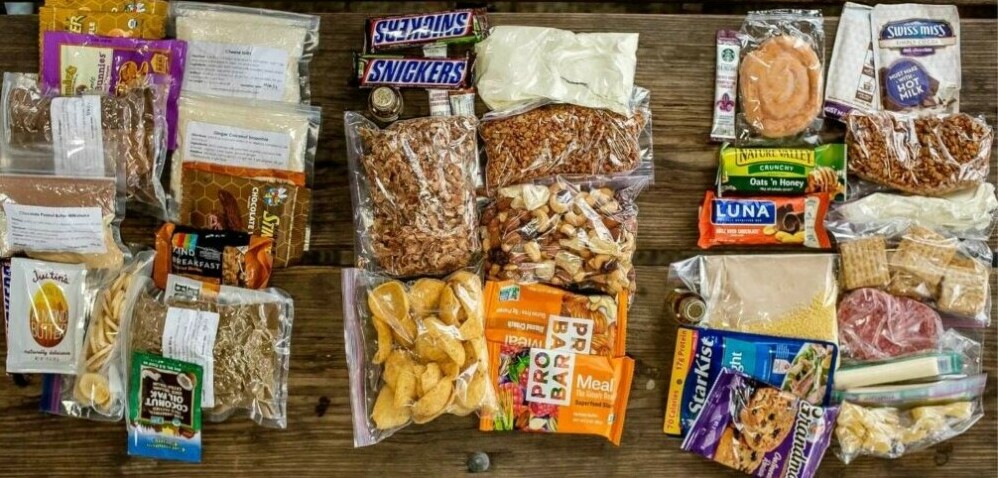
When you’re paddling through the serene waters or trekking the rugged trails of the wilderness, your body becomes a furnace demanding high-quality fuel. I understand the importance of replenishing that energy with meals that not only satisfy hunger but also delight the taste buds. Let’s talk about some scrumptious yet straightforward recipes for each meal of the day.
Mornings in the wilderness are refreshingly crisp, making it the perfect time for a warm, hearty breakfast. Hot cereals, such as oatmeal or wheat cereals with a mix of nuts and dried fruits, offer a powerful boost of energy. Try adding a spoonful of powdered milk or a dollop of nut butter for a protein kick. For those craving more traditional breakfasts, pre-made pancake mixes are not only lightweight and easy to pack but can also be a comforting start to your day when topped with a bit of honey or jam.
Lunch on the trail should be energizing yet easy to manage. Think about ready-to-eat foods that need no preparation, such as trail mix combining nuts, seeds, and dried fruits – a high-calorie snack easily nibbled on the go. Protein-rich snacks, such as pre-packed tuna or chicken pouches, provide a no-cook protein source, and can be paired with whole grain crackers or tortillas. Don’t forget to slip in a piece of dark chocolate or an energy bar – they provide a much-needed glucose boost and are morale lifters.
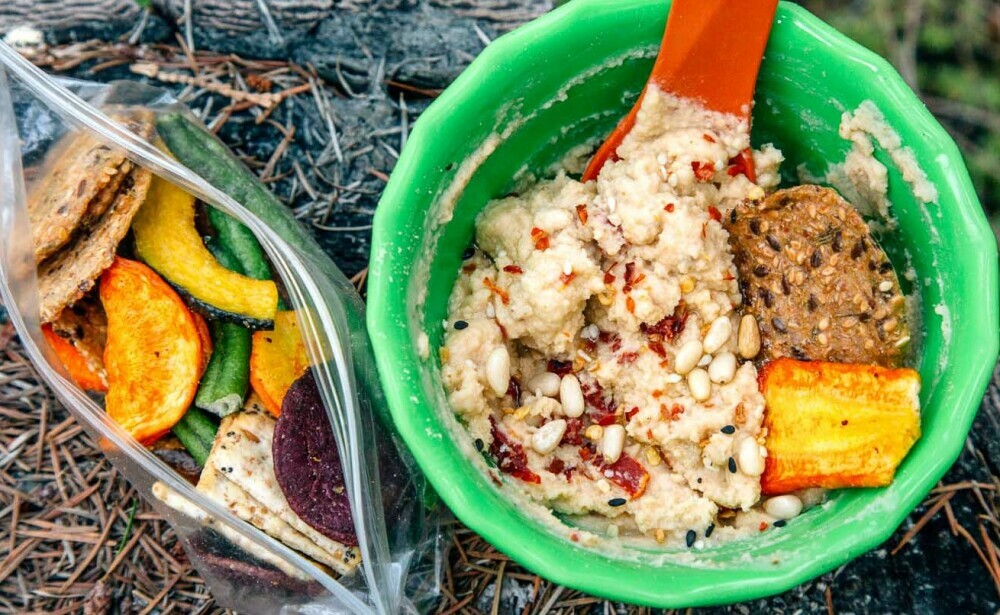
Dinner is the meal where you can truly wind down and refuel after a long day. One-pot meals are king here; they ease cleaning up and require minimal preparation. A base of quick-cooking grains – think couscous, instant rice, or pre-cooked dehydrated beans – can be enlivened with a protein such as dehydrated meat or a pouch of salmon. Add in a spice mix or a squeeze packet of sauce, and you’ll have a palatable feast that’s both satisfying and nourishing. For the vegetarians, textured vegetable protein (TVP) is a versatile and lightweight protein option that absorbs flavors well from sauces and spices.
What’s an evening in the wilderness without a treat? Desserts in the Boundary Waters should be a moment of indulgence. Energizing treats such as pre-made rice crispy bars, or a pack of no-bake cheesecake mix, allow you to conclude your day on a sweet note without the fuss.
The transition to campsite etiquette and safety naturally falls into place after you’ve enjoyed your meal. You’re probably aware that enjoying your meal responsibly means leaving no trace. I’ll go into detail next about how to wash dishes, manage leftovers, and secure your food supply to ensure both your safety and that of the wildlife.
Campsite Etiquette and Safety: Eating Responsibly in the Wild
Eating in the wilderness is an aspect of wilderness exploration that offers both sustenance and pleasure. As you reflect on your adventures and the meals that energized your days, remember that the practices you followed at your campsite are just as important as the trails you trekked. The commitment to leaving no trace and respecting wildlife is imperative for preserving the integrity of the wilderness for future generations.
The soapy suds from your dishwashing should be scattered away from natural water sources to protect aquatic life. Every tiny food scrap must be packed out or properly disposed of to ensure the natural diet of wildlife remains uninterrupted by human presence. And let’s not forget how crucial it is to be meticulous with bear-proofing our camps. By storing food away from sleeping areas and using bear-resistant containers, we prevent dangerous encounters and protect both the bears and us.
Water safety is another non-negotiable aspect of our wilderness adventuring etiquette. Treating water is not just about convenience; it is vital for our health. Whether you’re using a filter, purification tablets, or boiling water, ensuring you have access to safe drinking water is a fundamental requirement in the great outdoors.
In closing, the memories of delightful meals in the midst of nature’s grandeur are to be cherished. By meticulously planning your meals, packing with careful thought, and rigorously following campsite etiquette and safety measures, you can rest assured that your time in the great outdoors will be as impactful on you as it is gentle on the environment. So, enjoy each bite, share stories over the warmth of the campfire, and carry the spirit of responsible wilderness dining back home with you.
(As an Amazon Associate, I earn from qualifying purchases)
** Here’s a little transparency. Our website contains affiliate links. This means if you click and purchase, we may receive a small commission. Don’t worry, there’s no extra cost to you. It is a simple way you can help support our mission to bring you quality outdoor content. **